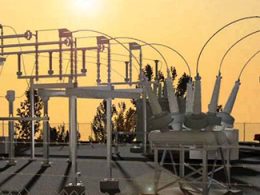In the ever-evolving landscape of manufacturing, the role of employee training cannot be underestimated. From enhancing productivity to ensuring quality control, a well-structured training program can make all the difference. In this article, we’ll delve into the crucial aspects of training manufacturing employees and provide you with valuable insights and tips to make your training initiatives a success.
1. The Importance of Employee Training in Manufacturing
In the manufacturing sector, where precision, safety, and efficiency are paramount, having a skilled workforce is essential. Employee training is not just an investment but a strategic necessity. It ensures that your workforce is well-equipped to handle the intricacies of your processes, machinery, and technology. By fostering a culture of continuous learning, manufacturers can reduce errors, minimize downtime, and create a more engaged and motivated workforce.
2. Key Techniques for Successful Manufacturing Employee Training
a. Hands-on Training: Manufacturing is a hands-on field, and so should be your training approach. Incorporate practical, interactive sessions where employees can work with actual machinery and tools. This approach bridges the gap between theory and practice, ensuring better comprehension and retention.
b. Customized Training Modules: Every manufacturing facility is unique, with its own set of processes and equipment. Develop training modules that are tailored to your specific operations. This not only makes the training more relevant but also increases its effectiveness.
c. Simulations and Virtual Reality: Embrace technology by using simulations and virtual reality (VR) to recreate real-life manufacturing scenarios. VR can provide a risk-free environment for employees to practice complex tasks and emergency procedures, boosting their confidence and skills.

3. Tailoring Training Programs to Manufacturing Processes
To maximize the impact of your training efforts, align them with your manufacturing processes. Start by conducting a thorough needs assessment to identify skills gaps and areas that need improvement. Then, design training programs that address these gaps directly. For example, if your facility uses CNC machines extensively, focus on advanced programming and operation techniques.
4. Measuring the Impact: Evaluating the Effectiveness of Training
It’s essential to have a system in place to measure the effectiveness of your training initiatives. Regularly assess key performance indicators (KPIs) such as reduced defect rates, increased production output, and decreased incident reports. Use employee feedback and performance metrics to refine your training programs continually.
In conclusion, effective employee training is the backbone of a successful manufacturing operation. By investing in the development of your workforce, you’re not only ensuring smoother processes but also fostering a culture of growth and excellence. Implement the techniques discussed in this article to witness improved productivity, heightened employee satisfaction, and a competitive edge in the manufacturing industry.
With these insights and strategies, your manufacturing facility will be well-equipped to train your employees for optimal performance and success.












